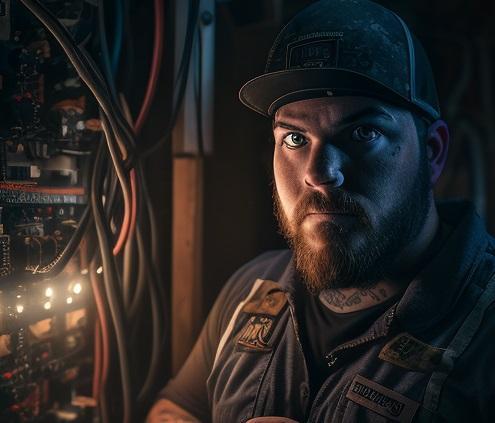When it comes to electrical work, it’s important to know the difference between a qualified and an unqualified electric worker. Not only is it important for safety reasons, but it’s also the law. The Occupational Safety and Health Administration (OSHA) has strict regulations in place to ensure that only qualified electric workers perform certain types of electrical work. Understanding this difference is crucial for employers and workers, as it can prevent accidents, injuries, and legal issues.
A qualified electric worker is someone who has the necessary training, experience, and knowledge to perform specific electrical tasks safely. These workers have completed an apprenticeship, have a journeyman’s license, or have a certain level of electrical experience and training. They also know how to properly use tools and equipment and can recognize and avoid hazards associated with electrical work. This means that they have a good understanding of the electrical systems, the hazards associated with it, and the necessary precautions to take. They are also equipped with the necessary skills and knowledge to safely install, maintain, and repair electrical systems.
On the other hand, an unqualified electric worker is someone who does not have the necessary training, experience, and knowledge to perform specific electrical tasks safely. These workers may have some basic electrical knowledge, but they have not completed an apprenticeship or journeyman training. They may also not be familiar with the proper use of tools and equipment and may not recognize the hazards associated with electrical work. These workers may not have the necessary skills and knowledge to safely install, maintain, or repair electrical systems. This lack of knowledge and experience can put the worker and others at risk of electrical hazards, such as electric shock, burn, and electrocution.
According to OSHA, only qualified electric workers are allowed to perform specific types of electrical work, such as working on live electrical circuits or installing new electrical systems. Unqualified electric workers, on the other hand, are not allowed to perform these types of tasks. This is to protect the safety of the workers and those around them. OSHA’s regulations ensure that only those who have the necessary qualifications, experience, and knowledge are permitted to perform certain types of electrical work, thus reducing the risk of accidents, injuries, and fatalities.
According to OSHA:
By subsection 1910.332(a), employees are delineated as either qualified persons or unqualified persons when working on or near exposed energized parts. Qualified persons have training, whereas unqualified persons have little or no training, in avoiding the electrical hazards of working on or near exposed energized parts. Training requirements for “qualified persons” and “unqualified persons” are contained in section 1910.332.
The National Fire Protection Association (NFPA) defines a qualified electrical worker as an individual who has the skills and knowledge related to the construction and operation of electrical equipment and installations and has received safety training to recognize and avoid the hazards involved. This includes, but is not limited to, the proper use of equipment, the skills needed to install, maintain, and repair equipment, and an understanding of the National Electrical Code (NEC). Please note that from an enforcement perspective, OSHA does not enforce NFPA 70E. OSHA enforces its own standards that relate to electrical hazards. OSHA may, however, use NFPA 70E to support citations for violations relating to certain OSHA standards, such as the general requirements for personal protective equipment found in 29 CFR 1910.335. An example of this would be consulting NFPA 70E’s Flash Hazard Boundary when considering citations for personal protective equipment under 1910.335.
It’s important to note that just because someone is a qualified electric worker, it doesn’t mean that they are exempt from hazards. Even qualified electric workers can make mistakes or encounter unexpected hazards on the job. However, their training and experience give them a better chance of recognizing and avoiding those hazards. Employers have to ensure that their workers, qualified or not, are properly trained on the hazards of their specific job and the measures to prevent them. This includes providing training on the use of tools and equipment, hazard recognition, and emergency procedures.
The distinction between qualified and unqualified electric worker is also important for liability purposes. Employers can be held liable for any accidents or injuries that occur as a result of an unqualified worker performing electrical work. This is why it’s important for employers to verify the qualifications of their electric workers and only allow qualified workers to perform specific types of electrical work. Employers should have a rigorous hiring process, including background checks and verification of qualifications, and also conduct regular training and assessments of their workers.
In conclusion, the difference between a qualified and an unqualified electric worker is crucial for safety and legal reasons. Employers should ensure that their electric workers are properly trained and qualified to perform specific types of electrical work. By doing so, they can help prevent accidents and injuries on the job and avoid liability issues. It’s also important for workers to understand the difference, so they can make sure they’re not taking on tasks that they’re not qualified to perform. By keeping this in mind, we can create a safer and more
References:










